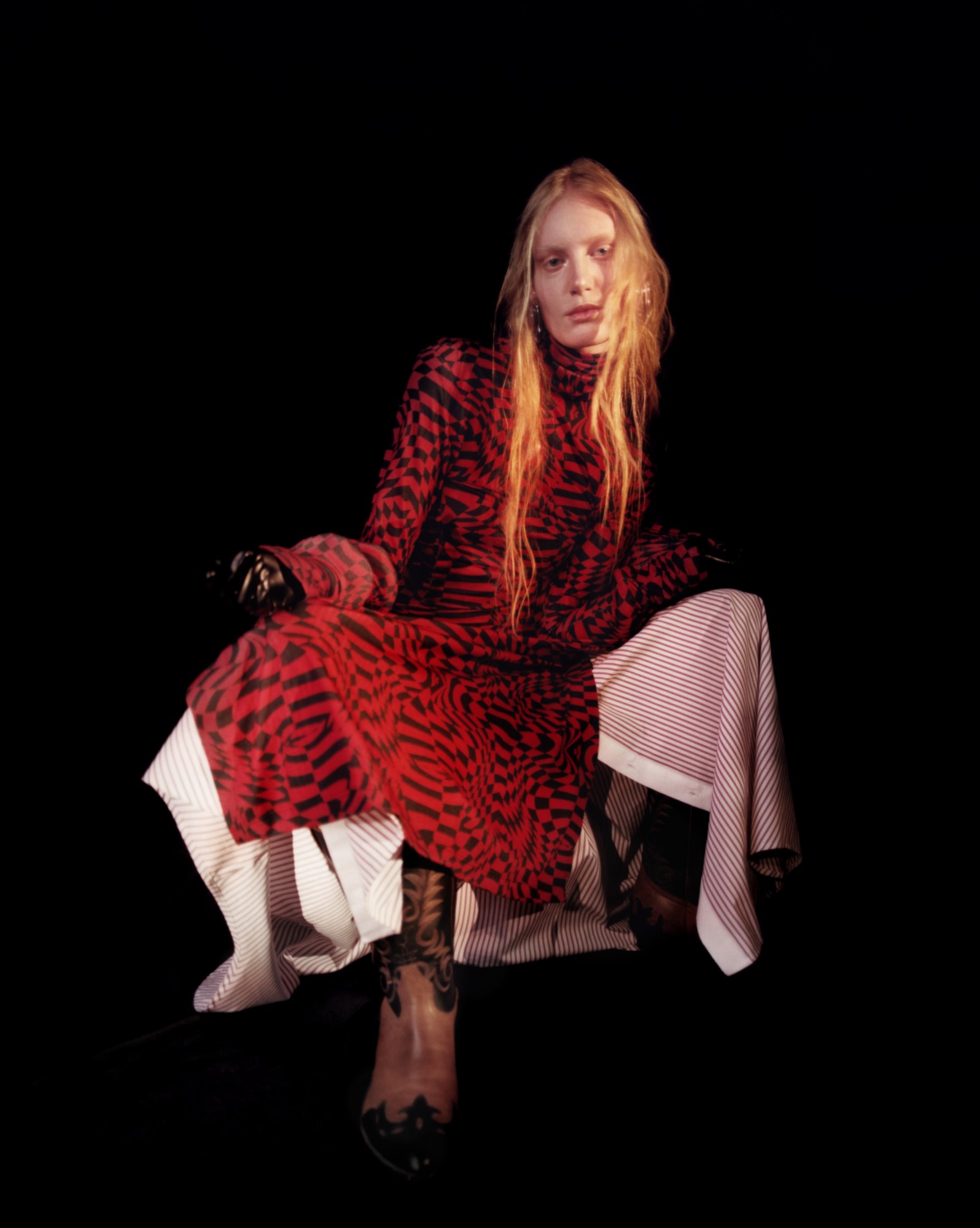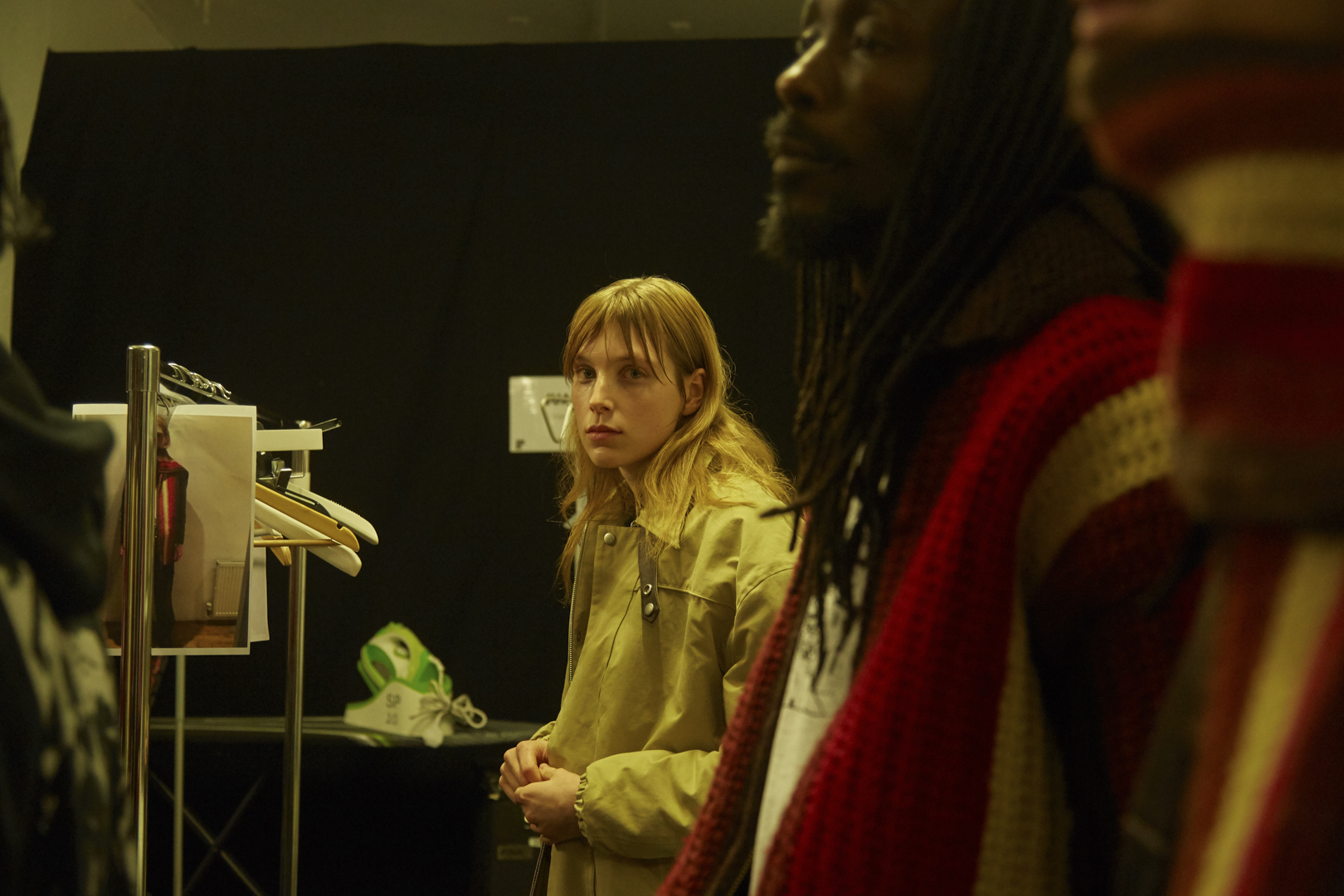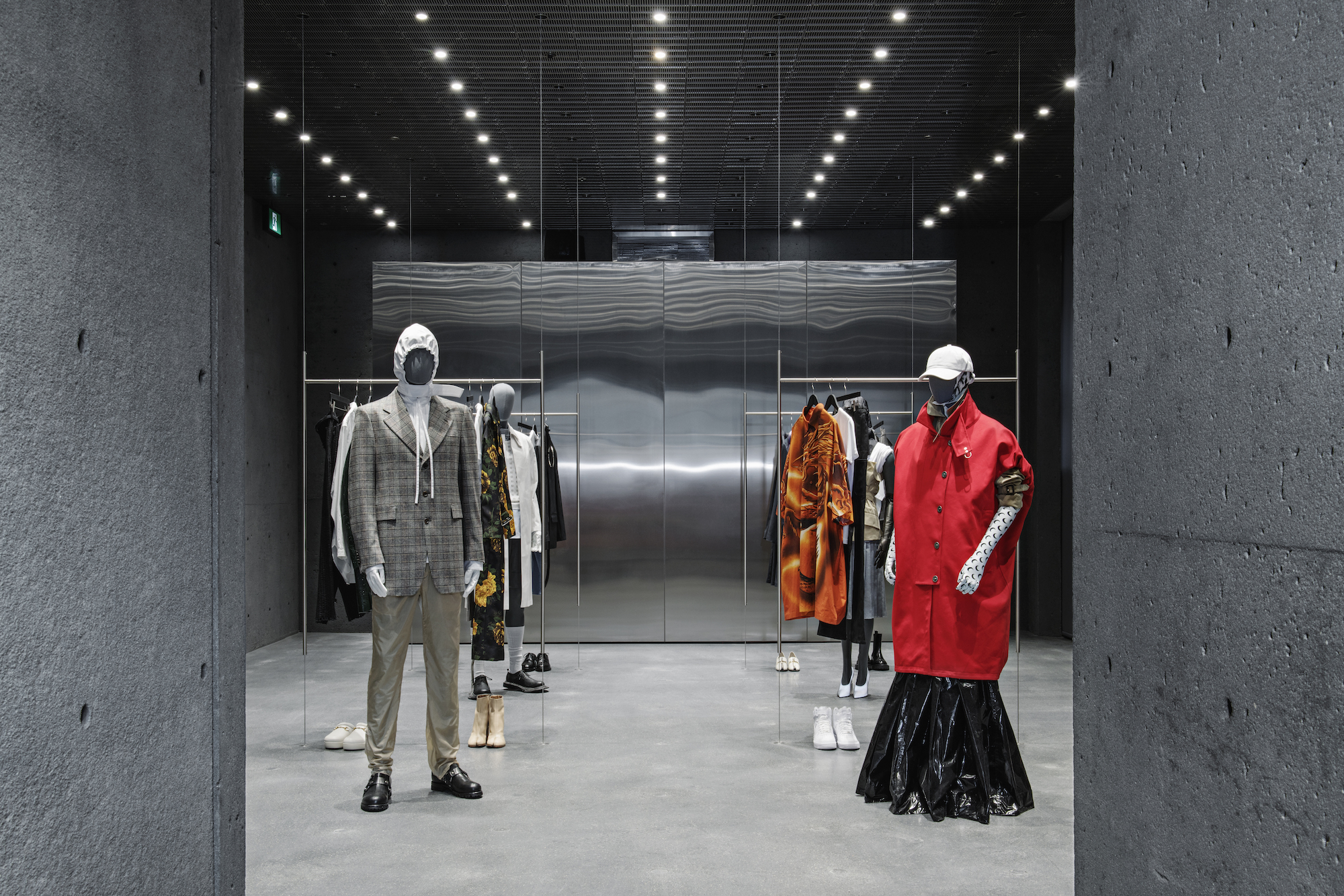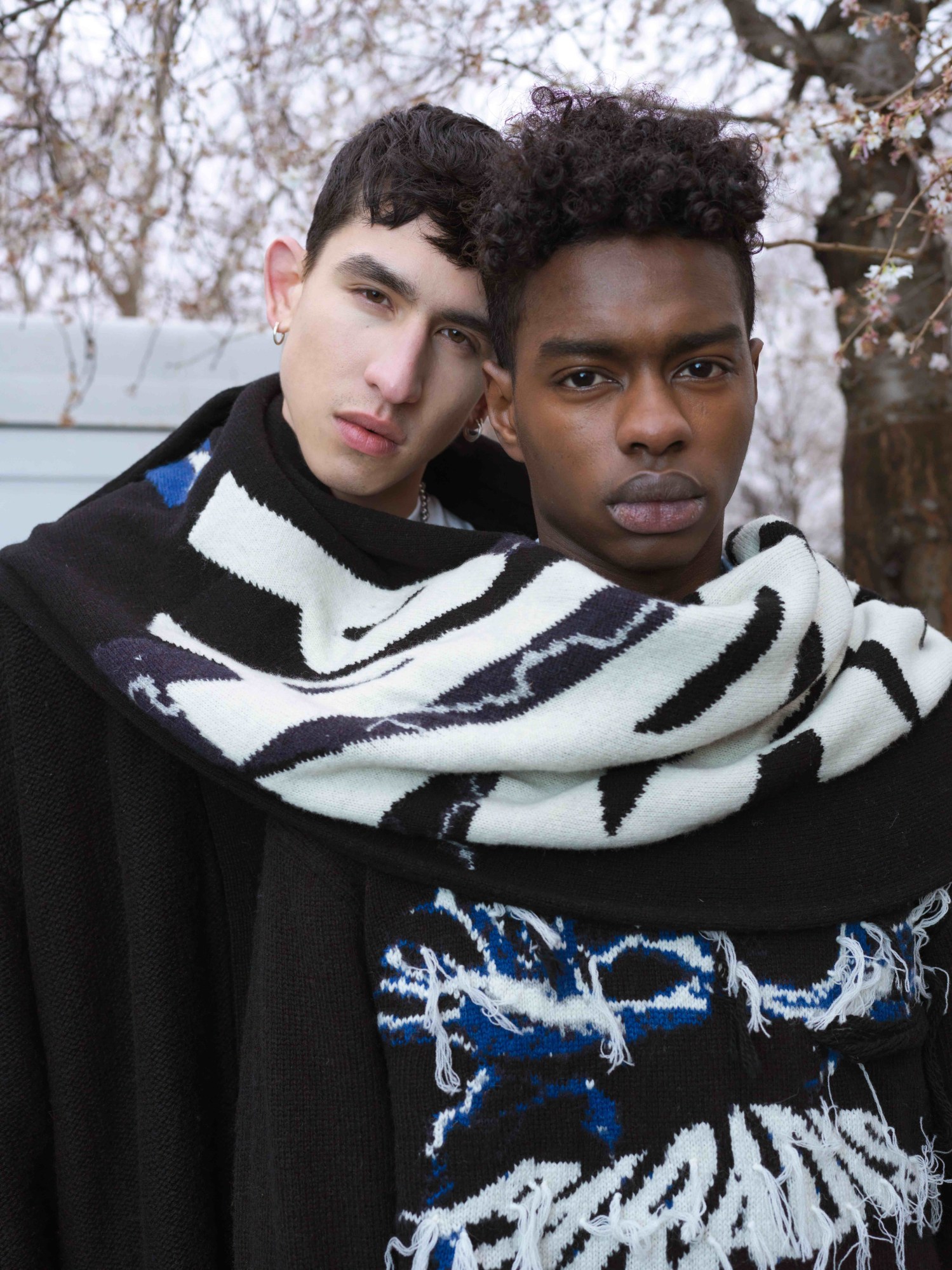Unholy cold, maple syrup and Céline Dion may typically be the first things to pop into your head when thinking of Montreal. There is, of course, much more to Canada’s second city — like poutine, and a music scene that incubated Kaytranada, Grimes, and Arcade Fire — but it’s been rare, historically at least, for thoughts to turn to fashion on hearing that unmistakable Québécois twang. The city, however, is far from short on impressive fashion credentials, perhaps best known for producing two LVMH Prize winners in the forms of Thomas Tait and Vejas Kruszewski. Though two of the city’s most celebrated sons may now be based elsewhere, recent years have given rise to a growing population of talented fashion professionals that are proud to call the city home. From Jon Rafman, the artist responsible for that Balenciaga spring/summer 19 set that made you feel like you were inside a rebooting Windows 95 desktop computer, to increasingly familiar names like 3.Paradis, Lecavalier, St Henri and even Fecal Matter, these new talents are leading the charge to reverse the negative trend of designers choosing to leave the city for the once more promising pastures of larger industry hubs.
Over the course of a tumultuous few decades of economic decline, fuelled by much of the country’s corporate headquarters upping sticks in favour of Toronto, the separatist political party, Parti Québécois, basically mandating all businesses to communicate exclusively in French in a predominantly English-speaking corner of the world, Montreal took some pretty serious hits to both its pockets and its pride. But, as is typical of post-downturn cities — Berlin, Detroit, Lisbon — an ensuing abundance of both cheap apartments and studios offered fertile ground for the growth of a thriving creative community. This, coupled with a gradual return of spending power to the city, has brought about a decreasingly hostile environment for the young city’s young brands, as Jean-Loup Leblanc-Roy, the creative director of St-Henri, a menswear brand that presents on the London schedule while retaining two-thirds of its base in Montreal, explains: “The increase of tourism and international students in the city probably boosts the industry locally,” he says, “and I think there is also an increase in interest towards high-fashion from the local Montrealers due to the success of SSENSE and Canadian designers abroad.”

Unquestionably the single most significant development in the Montreal scene in recent times, SSENSE opened its first brick-and-mortar outlet in 2004, since expanding to an empire that accommodates a much-loved e-commerce site, a fastidiously curated content platform under the editorial remit of 032c’s Joerg Koch, and, most recently, a five-story flagship in the city’s Old Port. Eager to foster the development of local talent, it’s behind them that the store is increasingly placing its freshly earned clout. “It has been really encouraging to see more Canadian and Montreal-based designers receiving international recognition in recent years, such as Montrealers Thomas Tait, Vejas Kruszewski, and most recently Marie-Ève Lecavalier being recognised by the LVMH Prize,” says Brigitte Chartrand, SSENSE’s Senior Director of Womenswear Buying. “We carry a great selection of Canadian designers on our website, from Lecavalier, Markoo, St-Henri, S.P. Badu, BOYY, Marina Moscone, Pihakapi designed by Vejas Kruszewski, Pearls Before Swine, among others.”
Offline, its ample new flagship space has been put to use, hosting all a manner of parties, performances and collection launches with a roster of figures celebrated internationally across disciplines of music, fashion and art, as well as events championing the local scene: “In less than a year we’ve brought in our collaborators for bespoke projects, like David Chipperfield, Arca, Virgil Abloh, Drake, Gucci, Valentino, Vejas Kruszewski, Lemaire, Pyer Moss, Harley Weir and Samuel Ross, who otherwise would likely not produce projects of this magnitude in Montreal. We have also worked with Marie-Ève Lecavalier to launch her brand exclusively online and in-store, and with Montreal-based Editorial Magazine to host the launch of one of their recent issues.” Back online, social media has played a particularly pivotal role in raising the store’s, and by proxy the scene’s, profile. Through its local account, @ssensemontreal, new designers in-store are highlighted, with many, such as Charles Jeffrey and Sies Marjan’s Sander Lak, making personal appearances to answer questions from fans, further developing customers’ awareness of the physical space beyond the online shop-content platform that most will be familiar with.
Things are looking pretty good for Montreal, but there remains, expectedly, work on the ground to be done. And the domain in which the need for radical reform is most acute is production. Historically a centre for the large-scale, commercial production for titanic brands like Aldo and Gildan, the city’s high-end production infrastructure is woefully lacking, leaving the city’s designers wanting for partners able to assist them in the execution of their wildest dreams. Among the few able to do so is Samir Ayachi, the president of Worldwideʷʷ, the manufacturing force behind some of the cities best-regarded brands. But despite the popularity he enjoys among the city’s designer community would suggest, even he admits that being based in the city poses limitations that he is unable to overcome. “It’s important to state, high-end production as we know it in Europe or in Asia does not exist in Canada,” he says. “High-end production includes other services besides cutting and sewing, which are the only things most Canadian producers offer. Some, like myself, also offer pattern-making and sampling, for example, but this is not enough. Producers need to be able to source a wide variety of the best quality fabrics and offer ‘infinite possibilities’ to designers when it comes to trimmings and finishing. They also need to be able to execute new techniques that designers create, and also help them financially by investing in their production.”
“Even when local designers do manage to enter into dialogue with producers potentially able to come through on their designs, it’s rare that they, unlike in say London or Paris, are willing to compromise on the pricing scales that typically favour high-volume producers.”
Faced with limitations regarding adequate production resources at home, Montrealer designers are often left with little choice other than to divert financial resources beyond the city limits and produce elsewhere. What’s more, even when local designers do manage to enter into dialogue with producers potentially able to come through on their designs, it’s rare that they, unlike in say London or Paris, are willing to compromise on the pricing scales that typically favour high-volume producers. “We did in Canada the first collection: we got there in the end, but it wasn’t easy,” reminisces Marie-Ève Lecavalier, the creative director behind LVMH Prize nominated Lecavalier. “When I tried to reach out to makers and suppliers here in Montreal, thinking that I’d be able to find support here, I quickly realised that there’s no interest in helping young designers. Here, it’s either about quantities and making money, rather than about a care for the product.”
There are also certain cultural obstacles at play. As mentioned earlier on, Quebec, the province in which Montreal sits, has historically suffered from a reputation for a somewhat myopic outlook on things. This is unfairly derived from the 70s heyday of the Parti Québécois, who infamously implemented draconian pro-French language laws in a city which, though majoritively francophone, is also home to very sizeable anglophone communities. Though the city has since evolved to become one of Canada’s most diverse, cosmopolitan and culturally prosperous, certain members of the city’s fashion community allege that a prejudice-laced hangover of those times lingers. “The Montreal community champions Quebecois designers more and that will definitely be the roadblock ahead for people who don’t fit into that tradition,” claim Hannah and Steven, the Montreal-based duo behind Fecal Matter, an Instagram renowned for a provocative fashion practice rooted in hardcore aesthetics and alien beauty. “To relate to the target audience of the Montreal media, it seems like you need to have a Québécois last name. We hope that this does not discourage young talent or anyone who wants to thrive and make a living for themselves in Montreal, but a lot of young non-Québécois fashion designers do leave Montreal and try to make it outside, because, to be honest, you can really find yourself wasting your time trying to convince a client that discriminates.”

Even among those that are supposedly placed on a pedestal, many speak of a latent shame running through the core of Québécois identity, resulting in the reluctance of many designers hailing from the province to integrate their heritage into their brands. This lies in direct contradiction to the branding practices of, say, Jacquemus, who openly relishes the pastel-hued market squares and sun-splashed cobbles of his native Provence. “I think there might be an inferiority complex to overcome in the French Canadian mentality. Montreal is smaller and poorer than Toronto, doesn’t have the culture of France…” muses Jean-Loup, “and I believe success in fashion is related a lot to confidence and authenticity, which can be more easily achieved if you are comfortable with, and understand your own culture.” Eager to assist in the buttressing of that confidence, he has conscientiously woven French-Canadian identity into the fabric of his brand, across both its branding — St-Henri takes its name from a working class francophone neighbourhood in the city’s south-west — and the garments themselves. “The brand’s DNA is rooted in Canadian culture, and where we produce is often a matter of expertise for a certain type of garment or a question of supply chain. For example, our organic jersey being manufactured in Montreal, assembling the garments in the city makes the most sense.”
A crucial tenet of any fashion centre’s development is, of course, its school system. It’s something we looked at when visiting the city last year. Students and teachers bemoaned a short-sighted focus on the technical side of things, as well as the complex bureaucratic set-ups that made the pursuit of any real change in the system a complex endeavour. “I feel that Montreal’s fashion schools mostly focus on training students to work in the very commercial, fast fashion environments of Montreal’s local brands,” says Émeric Tchatchoua, the designer behind 3.Paradis, the second of the city’s two brands nominated for this year’s LVMH Prize. “I definitely think Montreal’s school should focus more on creatively-skewed education in order to prepare and build the fashion designers and entrepreneurs of tomorrow.”

In a telling demonstration of the pace at which changes in the scene are underway, it now appears that plans are in place to evolve the city’s fashion education infrastructure in order to facilitate the growth and development of more creatively-minded designers. “The general direction in all Montreal fashion schools seems to be towards the development of more creative educational programs,” explains Milan Tanedjikov, a lecturer at both École supérieure de mode | ESG UQAM and LaSalle College, and creative director of the latter’s course. “For example at Lasalle College, in the final year, students can now choose to get familiar with a trend-based type of design process, or, if they wish to pursue careers as innovative designers, they can follow a course structured in such a way that it encourages them to develop their own design identities. At UQAM, École supérieure de mode, there have also been some important changes. Looking at the new program, it seems like creativity and innovation takes precedence over high-street minded fashion design teaching approaches.” That said, the technical focus of Montreal’s schools, dry an approach as it may be, is in large part the reason why Montreal-educated designers have earned such renown for their abilities where complex execution is concerned. “Yes,” affirms Milan, “traditionally the focus in Montreal’s schools has been on teaching technical skills and I sincerely hope that this tradition won’t be lost with ‘progress’,” Milan concludes.
All the same, there certainly has been progress in years recent, as proven not only by the increase in designers choosing the city as their base, but also by the recent proliferation of high-profile fashion-focussed events, both in SSENSE and beyond. Most significant was the recent opening of Thierry Mugler: Couturissime at the Montreal Museum of Fine Arts, a retrospective of the pioneering couturier, which has welcomed over 75,000 visitors in the two months since opening at the beginning of March. Showing in conjunction is Montreal Couture, a tribute to the work of ten of the city’s leading lights in fashion, among them Marie-Eve and Hannah and Steven of Fecal Matter. “The presence of fashion’s highest form of creativity, such as Mugler’s work, is amazing and so important to help the local community view beauty through another lens,” say the pair, “but the reality is it will take much more than that to push the Montreal client to start expressing themselves beyond an all-black outfit or mimicking basic internet trends that can be found on Instagram. It is going to take a giant cultural shift to push that client to express themselves in an authentic way where they don’t care how people judge them. That is really what our brand offers and why we do have many Montreal clients.”
Though cultural shifts rarely take place overnight, the evidence above would seem to suggest that one is well underway. And if anything, Montreal’s situation at the industry’s periphery that will only help it on its way. “We’ve always considered being based in Montreal (removed from the main fashion cities like New York, Paris, London, and Milan) to be one of our greatest advantages,” confirms Brigitte. “It liberates us from being part of the status quo and we’ve always challenged the conventions of our industry. Free from the stubborn, calcified identities and expectations of larger fashion hubs, its freshness, optimism and abundance of territory ripe for charting are assets that will no doubt prove key in its continued development.

